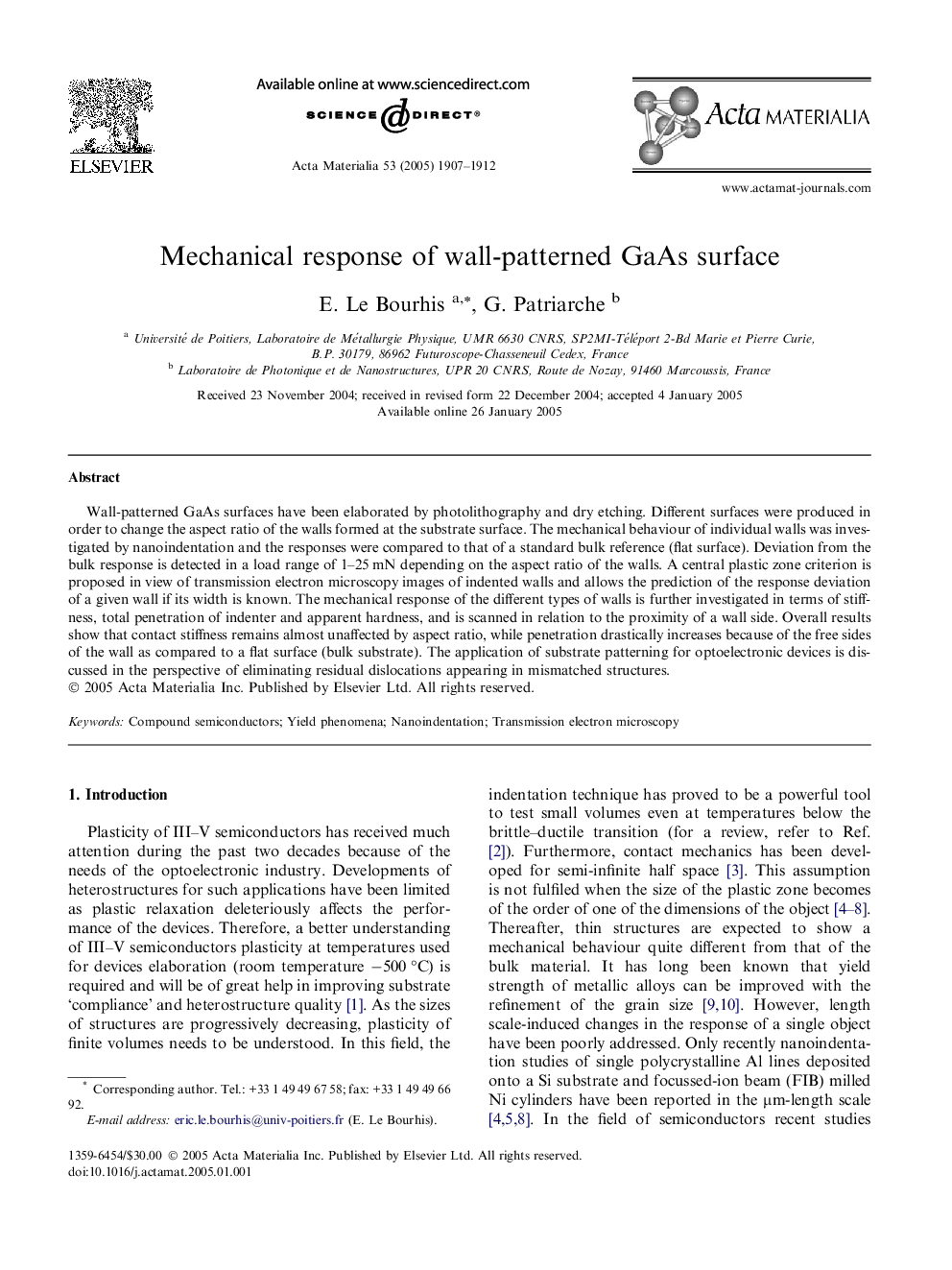| Article ID | Journal | Published Year | Pages | File Type |
|---|---|---|---|---|
| 1450898 | Acta Materialia | 2005 | 6 Pages |
Abstract
Wall-patterned GaAs surfaces have been elaborated by photolithography and dry etching. Different surfaces were produced in order to change the aspect ratio of the walls formed at the substrate surface. The mechanical behaviour of individual walls was investigated by nanoindentation and the responses were compared to that of a standard bulk reference (flat surface). Deviation from the bulk response is detected in a load range of 1-25Â mN depending on the aspect ratio of the walls. A central plastic zone criterion is proposed in view of transmission electron microscopy images of indented walls and allows the prediction of the response deviation of a given wall if its width is known. The mechanical response of the different types of walls is further investigated in terms of stiffness, total penetration of indenter and apparent hardness, and is scanned in relation to the proximity of a wall side. Overall results show that contact stiffness remains almost unaffected by aspect ratio, while penetration drastically increases because of the free sides of the wall as compared to a flat surface (bulk substrate). The application of substrate patterning for optoelectronic devices is discussed in the perspective of eliminating residual dislocations appearing in mismatched structures.
Related Topics
Physical Sciences and Engineering
Materials Science
Ceramics and Composites
Authors
E. Le Bourhis, G. Patriarche,
